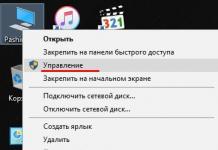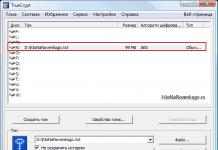У Вас в браузере заблокирован JavaScript. Разрешите JavaScript для работы сайта!
strip_tags(PHP 3 >= 3.0.8, PHP 4, PHP 5)
strip_tags - Удаляет HTML и PHP тэги из строки Описание string strip_tags (string str [, string allowable_tags])Эта функция возвращает строку str, из которой удалены HTML и PHP тэги. Для удаления тэгов используется автомат, аналогичный примененному в функции fgetss() .
Необязательный второй аргумент может быть использован для указания тэгов, которые не должны удаляться.
Замечание: Аргумент allowable_tags был добавлен в PHP 3.0.13 и PHP 4.0b3. С версии PHP 4.3.0 удаляются также HTML комментарии.
ВниманиеТак как strip_tags() не проверяет корректность HTML кода, незавершенные тэги могу привести к удалению текста, не входящего в тэги.
Пример 1. Пример использования strip_tags() $text = "Параграф.
Еще немного текста"; echo strip_tags($text); echo "\n\n-------\n"; // не удалятьEcho strip_tags($text, "
"); // Разрешаем ,, echo strip_tags($text, "");
Этот пример выведет:
Параграф. Еще немного текста -------
Параграф.
Еще немного текста
ВниманиеЭта функция не изменяет атрибуты тэгов, указанных в аргументе allowable_tags, включая style и onmouseover.
С версии PHP 5.0.0 strip_tags() безопасна для обработки данных в двоичной форме.
У данной функции есть существенный недостаток - это склейка слов при удалении тегов. Кроме этого функция имеет уязвимости. Альтернативная функция аналог strip_tags:
Смотрите также описание функции
When PHP parses a file, it looks for opening and closing tags, which are which tell PHP to start and stop interpreting the code between them. Parsing in this manner allows PHP to be embedded in all sorts of different documents, as everything outside of a pair of opening and closing tags is ignored by the PHP parser.
PHP also allows for short open tag
The end-of-line character is whitespace, so it is all that you would need.
1 year ago
Closing PHP tags are recognised within single-line comments:
This is output as literal text.
However they do not have an effect in C-style comments:
as closing tags are ignored inside C-style comments. */
?>
3 months ago
Omit closing tag ?> always whenever you can
example:
varia.php
//other words: an extra "Enter" is guilty
---------------
Welcome - at the browser label
source won"t tell you what happened - there will be fine:
Welcome
Now imagine, what else can go wrong because of it? Everything, as Murphy said.
And you will look for the answer why...? And where...?
It"s just simplest example.
PHP — это встраиваемый серверный язык программирования. Большая часть его синтаксиса заимствована из C , Java и Perl . А также добавлена пара уникальных характерных только для PHP функций . Основная цель этого языка — создание динамически генерируемых PHP HTML страниц .
PHP в HTMLПри создании сложных веб-страниц вы столкнетесь с необходимостью объединить PHP и HTML для реализации конкретных задач. На первый взгляд это может показаться сложным, так как PHP и HTML являются двумя независимыми дисциплинами, но это не так. PHP предназначен для взаимодействия с HTML , и его код может быть включен в разметку страницы.
В HTML-страницы PHP-код включается с помощью специальных тегов. Когда пользователь открывает страницу, сервер обрабатывает PHP-код , а затем отправляет результат обработки (не сам PHP-код ) в браузер.
HTML и PHP довольно просто объединить. Любая часть PHP-скрипта за пределами тегов игнорируется PHP-компилятором и передается непосредственно в браузер. Если посмотреть на пример, приведенный ниже, то можно увидеть, что полный PHP-скрипт может выглядеть следующим образом:
Привет, сегодня .
Приведенный выше код — это обычный HTML с небольшим фрагментом PHP , который выводит текущую дату, используя встроенную функцию date . При этом весь HTML будет игнорироваться PHP-компилятором и передаваться в браузер без изменений.
Интегрировать PHP в HTML действительно очень легко. Помните, что скрипт — это HTML-страница с включением определенного PHP кода . Можно создать скрипт, который будет содержать только HTML (без тегов ), и он будет нормально работать.
Более продвинутые методы:
- Menu Item
и результат:
PHP в HTML с помощью short_open_tagЕсли нужно максимально сократить код, перед тем, как в PHP вставить HTML , вы можете использовать short_tags . В результате не нужно будет вводить .
Имейте в виду, что если нужно создать сайт, совместимый с максимальным количеством платформ, при вставке PHP в HTML не стоит полагаться на short_tags .
HTML в PHP с использованием echoЕще один способ интеграции HTML в PHP-файл — команда echo: .
Это повлияет на подсветку разметки в большинстве редакторов. Поэтому необходимо выделять все двойные кавычки внутри HTML-кода с помощью обратной косой черты.
PHP в HTML — расширения файловДля стандартно настроенного веб-сервера :
AddHandler cgi-script .html .htm
Для веб-сервера с запущенным FastCGI :
AddHandler fcgid-script .html .htm
HTML в PHPТакже можно использовать HTML-код в PHP-скриптах . Все, что нужно сделать, это при открытии страницы с помощью PHP изменить порядок открывающихся тегов HTML и PHP .
Last update on March 25 2019 12:36:35 (UTC/GMT +8 hours)
PHP opening and closing Tags syntaxThere are four different pairs of opening and closing tags which can be used in php. Here is the list of tags.
- Default syntax
- Short open Tags
- HTML Script Tags
- ASP Style Tags
Default Syntax
The default syntax starts with "".
Example:
Short open Tags
The short tags starts with "". Short style tags are only available when they are enabled in php.ini configuration file on servers.
Example:
HTML Script Tags
HTML script tags look like this:
echo "This is HTML script tags.";
Some editors like Front Page editor have own problem to deal with escape situation and the said script is effective to solve it.
ASP Style Tags
The ASP style tags start with "". ASP style tags are only available when they are enabled in php.ini configuration file on servers.
Example:
Note: The above two tags and examples are given only for reference, but not used in practice any more.
PHP Statement separation
In PHP, statements are terminated by a semicolon (;) like C or Perl. The closing tag of a block of PHP code automatically implies a semicolon, there is no need to have a semicolon terminating the last line of a PHP block.
Rules for statement separation
- a semicolon
- AND/OR
- a closing PHP tag
Valid Codes
In the above example, both semicolon(;) and a closing PHP tag are present.
In the above example, there is no semicolon(;) after the last instruction but a closing PHP tag is present.
In the above example, there is a semicolon(;) in the last instruction but there is no closing PHP tag.
PHP Case sensitivity
In PHP the user defined functions, classes, core language keywords (for example if, else, while, echo etc.) are case-insensitive. Therefore the three echo statements in the following example are equal.
Example - 1
We are learning PHP case sensitivity We are learning PHP case sensitivity We are learning PHP case sensitivity
On the other hand, all variables are case-sensitive.
Consider the following example. Only the first statement display the value as $amount because $amount, $AMOUNT, $amoUNT are three different variables.
Example - 2
The Amount is: 200 The Amount is: The Amount is:
PHP whitespace insensitivity
In general, whitespace is not visible on the screen, including spaces, tabs, and end-of-line characters i.e. carriage returns. In PHP whitespace doesn"t matter in coding. You can break a single line statement to any number of lines or number of separate statements together on a single line.
The following two examples are same:
Example:
Example: Advance whitespace insensitivity
The Name of student is: David Rayy His Class is: V and Roll No. is 12
Example: Whitespace insensitivity with tabs and spaces
In the following example spaces and tabs are used in a numeric operation, but in both cases, $xyz returns the same value.
PHP: Single line and Multiple lines Comments
Single line comment
PHP supports the following two different way of commenting.
# This is a single line comment.
//This is another way of single line comment.
Example:
Multiple lines comments
PHP supports "C", style comments. A comment starts with the character pair /* and terminates with the character pair */.
/* This is a multiple comment testing,
and these lines will be ignored
at the time of execution */
Example:
Multiple lines comments can not be nested
First PHP Script
Here is the first PHP script which will display "Hello World..." in the web browser.
<?php echo "Hello World..."; ?>
The tags tell the web server to treat everything inside the tags as PHP code to run. The code is very simple. It uses an in-build PHP function "echo" to display the text "Hello World ..." in the web page. Everything outside these tags is sent directly to the browser.
Pictorial presentation
Combining PHP and HTML
PHP syntax is applicable only within PHP tags.
PHP can be embedded in HTML and placed anywhere in the document.
When PHP is embedded in HTML documents and PHP parses this document it interpreted the section enclosed with an opening tag () of PHP and ignore the rest parts of the document.
PHP and HTML are seen together in the following example.
PHP Page
Practice here online:


























